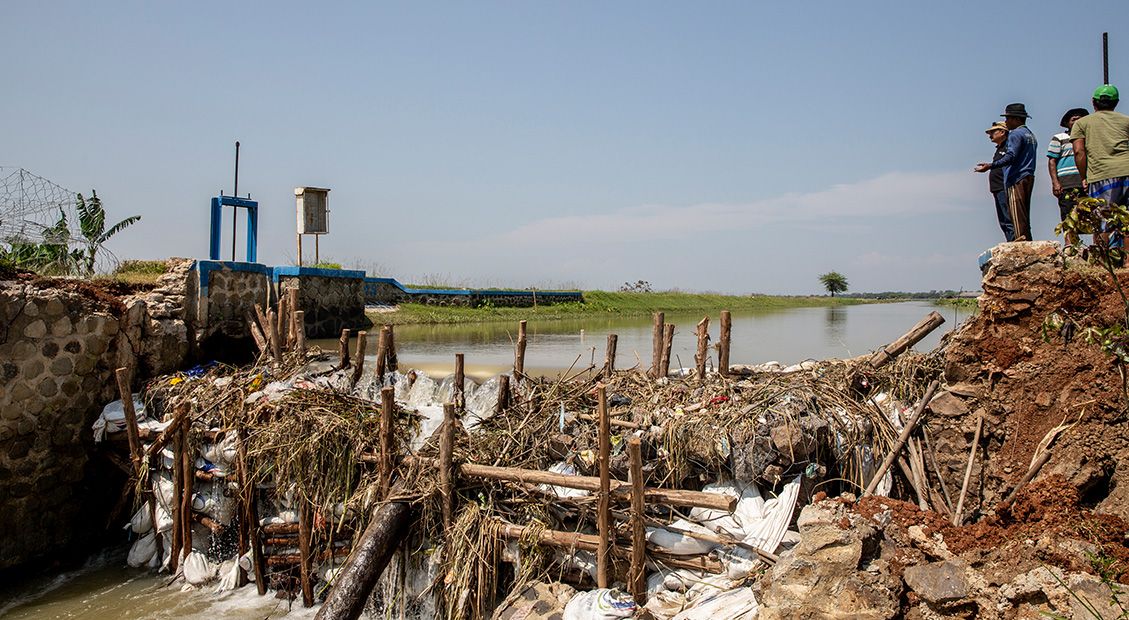While Asia’s development can be characterized by its fast economic and population growth and rapid urbanization, there is growing need to optimally and sustainably harness the productive potential of key resources such as water to support the region’s continued growth, be it for agriculture, industry, energy, or domestic use.
Around half-a-billion Asians currently face water shortages, more than a billion do not have access to adequate water and sanitation services, and many water service providers have been struggling to keep up with the ever-increasing demand. Asia also has some of the highest levels of groundwater depletion globally and accounts for more than 50% of global groundwater withdrawals. Uncontrolled expansion of groundwater pumping has reached an unsustainable level in many Asian countries. Cheap and subsidized electricity has made it an easily accessible source for domestic water and a feasible irrigation option for millions across the region. Although this has had positive implications for food security and poverty reduction, it has also led to widespread groundwater depletion.
Managing water’s destructive forces is another concern. This will become increasingly important as urbanization will continuously concentrate people and assets in urban areas, which coupled with climate change, will be exposed to higher risks of water-related disasters. Some of the world’s most vulnerable cities to climate change are located in Asia. Around 770 million urban populations on the continent are perennially exposed to flood risks.
These challenges are further exacerbated by the continued existence of investment gaps in the sector. Multilateral development banks (MDBs) can leverage their funds to partly address this gap. However, addressing Asia’s water challenges is not just a matter of spending more, but also spending better. MDBs, including AIIB, need to consider that not all water challenges can be solved with infrastructure alone nor through better management alone—some balance is necessary. Although many would argue that some “minimum platform” of infrastructure is needed, this infrastructure is a necessary but not sufficient condition for harnessing water’s productive potential and mitigating its destructive forces.
AIIB is committed to fostering sustainable economic development across Asia. To do this, investments in the water sector are crucial, as the sector is closely intertwined with many key issues and agendas, including climate, urban, energy and food. AIIB’s Water Sector Strategy is central to optimally generate impact from the Bank’s financings by recognizing the multiverse of challenges and the cross-cutting nature of the sector. The Strategy serves multiple purposes, including highlighting the Bank’s investment focus in a sector characterized by the vastness of its scope, its institutional complexity, and its high investment need. The Strategy is also needed to identify areas for the Bank’s internal growth and external partnership within the sector; both of which will be crucial for AIIB in entering and establishing itself in a wide landscape of long-standing existing players.
The Strategy is fully aligned with the Sustainable Development Goals (SDGs), especially SDG 6: to ensure the availability and sustainable management of water and sanitation for all. Because our Members’ needs are diverse and continuously changing, the Strategy endorses a client-oriented approach. Lastly, the Strategy envisions a unique and catalytic role for the Bank in improving the efficiency of the water sector through the application of innovative technologies.
MDBs like AIIB can play a central role in this effort by leveraging funding, facilitating the transfer of knowledge and best practices, strengthening capacities, and bringing in innovative technologies. To address Asia’s groundwater crisis, AIIB invests in improving the supply of domestic water and surface irrigation as measures to prevent, alleviate, and stop groundwater extraction across Asia. At the same time, the Bank strengthens water agencies to monitor groundwater depletion and promote conjunctive use of surface and groundwater resources.
AIIB stands ready to continue to partner with and support the development of its members either through financing infrastructure development in the water sector or preparing high-quality projects that support equitable and sustainable economic development. It is also important to mention that aside from financing infrastructure development, the Bank also supports project preparation through its Project Preparation Special Fund (PPSF), which is available to eligible AIIB members—especially low-income members or those with substantial development needs and capacity constraints. Project preparation activities are critical to improve project quality, ensure bankability in terms of economic, environmental, and social sustainability and implementation readiness.
Identifying the objectives and impact of key infrastructure investments will require close interaction with AIIB’s client countries and key partners. AIIB and its Water Sector Strategy are well placed with the aim to finance Infrastructure for Tomorrow (i4t)—infrastructure that is environmentally, economically, and socially sustainable.
Related reads:
- Making Every Drop Count: How AIIB is Building Infrastructure for Tomorrow in Indonesia’s Water Sector by David Ginting
- Giving Power to Others: How AIIB Is Strengthening Power Distribution in Indonesia by Ziwei Liao
- Starting Things Right: Meet the Specialists Who Promote Best Environmental and Social Practices in AIIB Projects by Maricris Jan Tobias.


